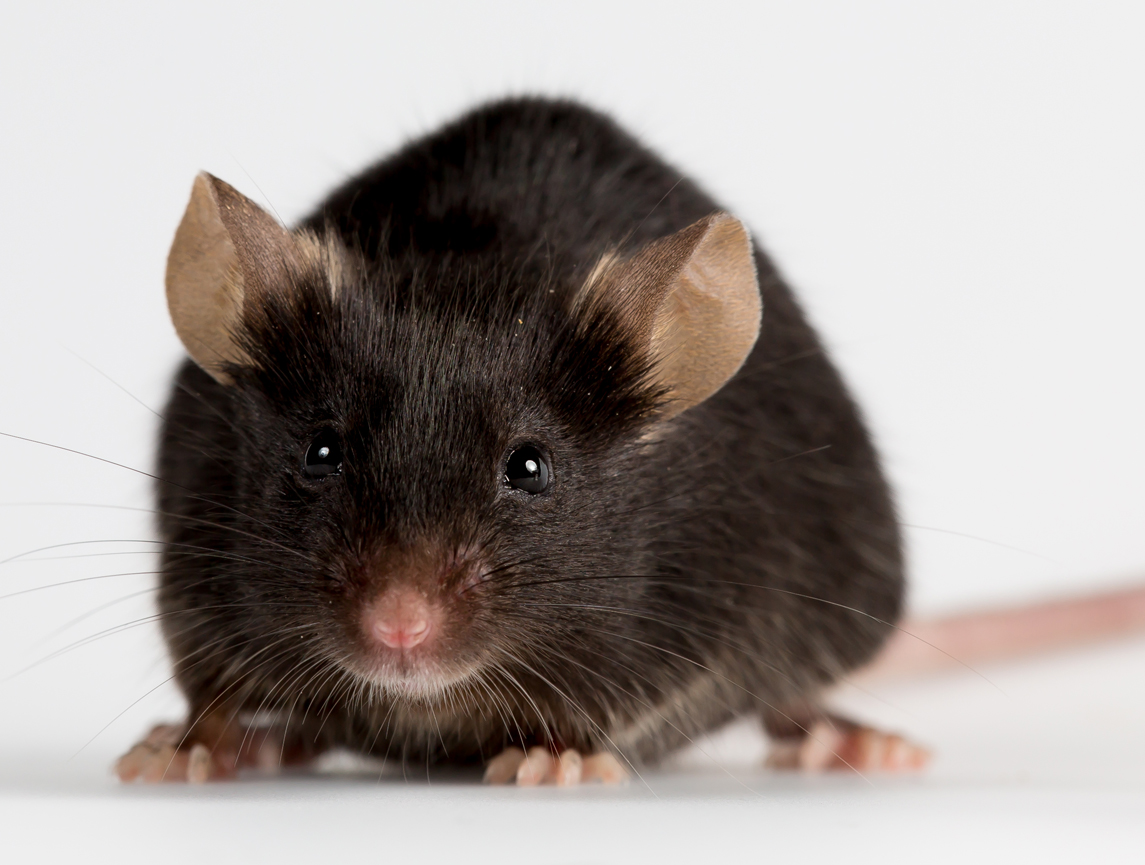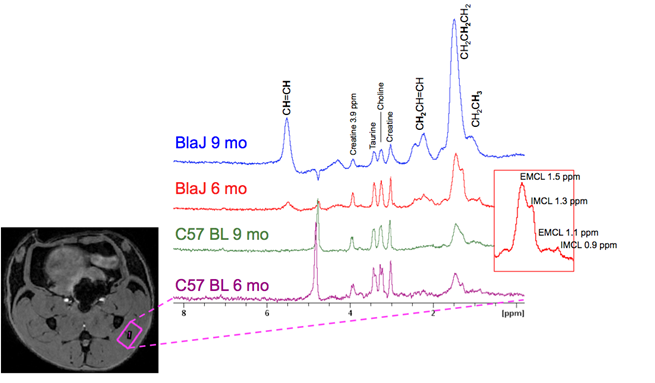ACCESS RESOURCES
Preclinical Platform
ACCESS RESOURCES
Preclinical Platform
Preclinical Platform
Mouse models can be a powerful tool for understanding and developing treatments for genetic diseases. Yet finding ways to reliably measure disease progression in mice can be difficult and time consuming. The Jain Foundation has made a concerted effort to find effective evaluation methods that will have the best chance of demonstrating the effectiveness of possible therapeutics and predicting their efficacy in people.

Preferred models
Several man-made and naturally occurring dysferlin deficient mouse lines are available. Our experience with them has resulted in a preference for the BlaJ strain developed by Dr. Isabelle Richard at Genethon. In this mouse strain, the progressive muscular dystrophy (prmd) allele from the A/J inbred strain is crossed onto the C57BL/6 genetic background. The genetic mutation in dysferlin is an ETn retrotransposon (5-6kb) inserted in intron 4 of the dysferlin gene, which results in no detectable dysferlin expressed by these animals. Dr. Richard donated the strain to The Jackson Laboratory in 2010. Since then, the Jain Foundation has maintained a live colony of this strain which we supply to researchers worldwide free of charge. For a full list of available animals models, please visit our research tools page on the topic. See Research Tips for more information.
Affected muscles
Dysferlinopathy has a pronounced bias toward affecting certain muscles. While we don’t understand why this is the case, it is important to take into consideration when evaluating mice, as many of the traditionally studied lower limb muscles are not very affected in dysferlin null mice. In order of severity, the most affected muscles are psoas, gluteus, quadriceps femoris, gastrocnemius, and tibialis anterior. Some researchers also include the abdominal muscles and triceps as highly affected. This pattern of involvement is markedly different from humans, where the calf muscles are typically one of the earliest and most affected muscle groups. See Research Tips for more information.
Preclinical testing at CRL-Finland
Working with the MRI experts at CRL-Finland, the Jain foundation has developed a preclinical testing platform that can track the muscle deterioration and fat infiltration of the hip muscles in dysferlin deficient mice over time. The system is consistent, provides a good therapeutic window, and assesses a major reason for muscle weakness in patients: loss of muscle due to fiber death and fatty replacement. The platform is available to academic and industry partners interested in proof of concept studies to demonstrate the potential of possible therapies for dysferlinopathy. Further details about the platform and what can be measured are available here. Please contact the JF if you think this preclinical testing platform could help your research. Some published examples of the use of the platform include:
Effect of Ibuprofen on Skeletal Muscle of Dysferlin-Null Mice
Figures and Legends:
MRI images showing deterioration of the gluteus muscles of a BlaJ mouse over time (see arrows).

MRS spectra from the Glutes of 6 and 9 month old BlaJ animals demonstrating a marked increase in lipids. 12 month spectra is not shown as the lipid content becomes so high it distorts the spectra.

Preclinical Platform
Mouse models can be a powerful tool for understanding and developing treatments for genetic diseases. Yet finding ways to reliably measure disease progression in mice can be difficult and time consuming. The Jain Foundation has made a concerted effort to find effective evaluation methods that will have the best chance of demonstrating the effectiveness of possible therapeutics and predicting their efficacy in people.

Preferred models
Several man-made and naturally occurring dysferlin deficient mouse lines are available. Our experience with them has resulted in a preference for the BlaJ strain developed by Dr. Isabelle Richard at Genethon. In this mouse strain, the progressive muscular dystrophy (prmd) allele from the A/J inbred strain is crossed onto the C57BL/6 genetic background. The genetic mutation in dysferlin is an ETn retrotransposon (5-6kb) inserted in intron 4 of the dysferlin gene, which results in no detectable dysferlin expressed by these animals. Dr. Richard donated the strain to The Jackson Laboratory in 2010. Since then, the Jain Foundation has maintained a live colony of this strain which we supply to researchers worldwide free of charge. For a full list of available animals models, please visit our research tools page on the topic.
Affected muscles
Dysferlinopathy has a pronounced bias toward affecting certain muscles. While we don’t understand why this is the case, it is important to take into consideration when evaluating mice, as many of the traditionally studied lower limb muscles are not very affected in dysferlin null mice. In order of severity, the most affected muscles are psoas, gluteus, quadriceps femoris, gastrocnemius, and tibialis anterior. Some researchers also include the abdominal muscles and triceps as highly affected. This pattern of involvement is markedly different from humans, where the calf muscles are typically one of the earliest and most affected muscle groups.
Preclinical testing at CRL-Finland
Working with the MRI experts at CRL-Finland, the Jain foundation has developed a preclinical testing platform that can track the muscle deterioration and fat infiltration of the hip muscles in dysferlin deficient mice over time. The system is consistent, provides a good therapeutic window, and assesses a major reason for muscle weakness in patients: loss of muscle due to fiber death and fatty replacement. The platform is available to academic and industry partners interested in proof of concept studies to demonstrate the potential of possible therapies for dysferlinopathy. Further details about the platform and what can be measured are available here. Please contact the JF if you think this preclinical testing platform could help your research. Some published examples of the use of the platform include:
Effect of Ibuprofen on Skeletal Muscle of Dysferlin-Null Mice
Figures and Legends:
MRI images showing deterioration of the gluteus muscles of a BlaJ mouse over time (see arrows).

MRS spectra from the Glutes of 6 and 9 month old BlaJ animals demonstrating a marked increase in lipids. 12 month spectra is not shown as the lipid content becomes so high it distorts the spectra.

